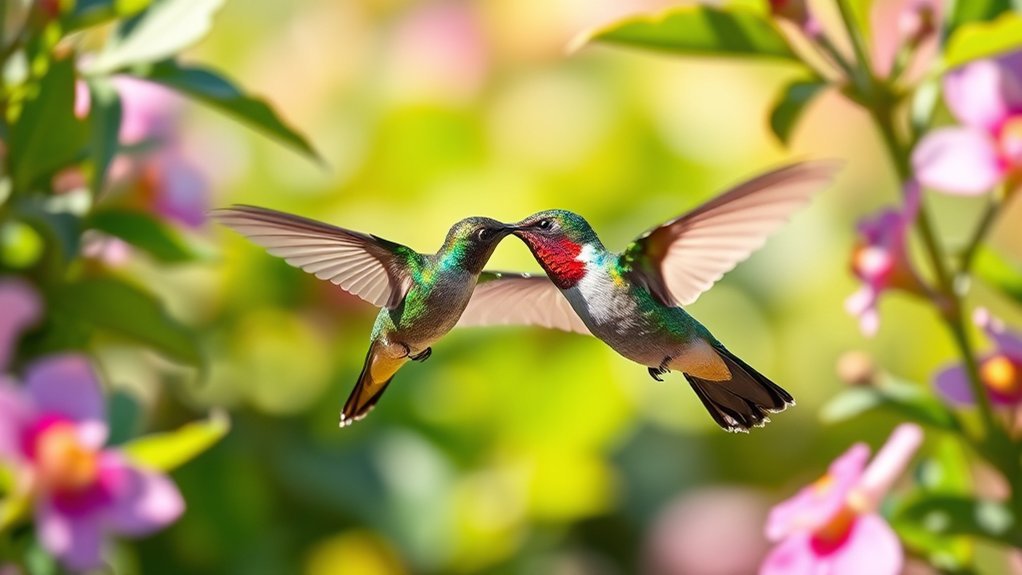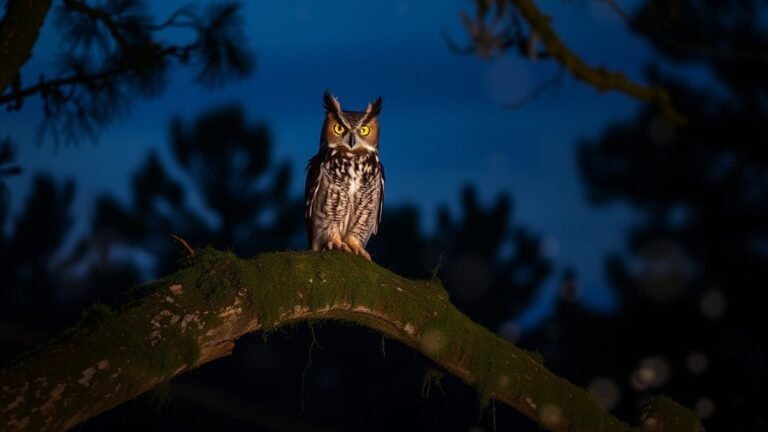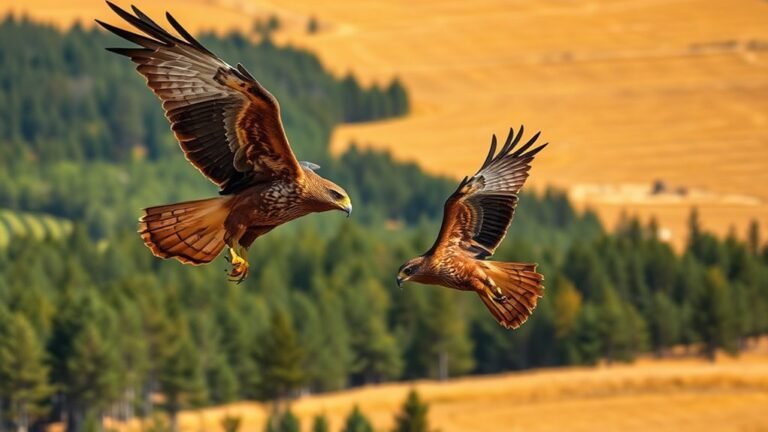Birdwatching in New Jersey: Notable Species to Spot
Birdwatching in New Jersey is a fun way to see many different kinds of birds. Imagine watching an Osprey dive down to catch a fish or seeing a Ruby-Throated Hummingbird zip from flower to flower. Every time you step outside, you might see something new and exciting.
New Jersey has many different places where birds live. You can look for them in parks, wetlands, and forests. You never know which bird will appear next. Will you see a bright Cardinal or listen to the call of a Woodpecker?
Birdwatching is a cool adventure. Each bird you spot adds to the joy of being in nature. Grab your binoculars, and see what birds you can find today!
A Quick Overview
- Ospreys come back to New Jersey in spring. They build nests near water. Ospreys are great at catching fish and travel long distances.
- Ruby-throated Hummingbirds love bright flowers and feeders. They have beautiful colors and amazing journeys when they migrate.
- American Woodcocks are known for their "peent" calls and cool flying shows. They are fun to watch during twilight.
- Red-tailed Hawks are easy to spot with their striking colors. They fly high and have sharp eyes to catch small animals.
- Great Egrets stand out with their lovely white feathers. They catch fish by moving slowly in shallow water and like to nest in groups.
Birdwatching in New Jersey is full of exciting species. Grab your binoculars and enjoy the beauty of these birds!
Ospreys: Masters of the Sky

As you look out at the sparkling waters of New Jersey's coastal marshes, keep an eye on the sky.
You might see an osprey flying overhead. These amazing birds have strong wings and are known for their long migrations. They travel thousands of miles between where they nest and where they spend the winter.
In spring, ospreys return to New Jersey. They look for familiar spots to build their nests. Ospreys like to make their homes on big, sturdy platforms near the water. This keeps their young safe.
When you see ospreys diving for fish, you'll notice how skilled they're at catching their meals.
Spotting an osprey can connect you with nature. It makes your birdwatching experience in this lively ecosystem even more special.
Ruby-Throated Hummingbirds: Tiny Wonders

While you watch ospreys flying high in the sky, take a moment to look at the flowers and feeders nearby.
You might spot a ruby-throated hummingbird. These tiny birds are drawn to bright flowers and feeders filled with sweet nectar. Their shiny feathers sparkle in the sunlight as they move quickly from flower to flower.
These hummingbirds have amazing migration patterns. They fly thousands of miles from Central America to New Jersey to find food and warmer weather.
American Woodcock: The Ground Dancer

If you go into the woods of New Jersey during twilight, listen for the fun sounds of the American woodcock. This bird is known for its special dances to win over a mate. The male woodcocks fly high in the sky and then dive down, showing off their skills.
They're great at hiding, so spotting them can be a fun challenge.
Here are some easy things to remember about the woodcock:
- Sounds: You can hear their funny "peent" calls.
- Flying: Watch how they go up and down in the air.
- Defense: Look for males protecting their area.
- Hiding: Notice how their colors help them blend in with the ground.
Enjoy the magic of the woodcock; it can make your birdwatching fun and exciting!
Red-Tailed Hawk: Majestic Hunters
The Red-tailed Hawk is one of the most well-known birds of prey in New Jersey. You can easily recognize them by their beautiful coloring and strong look.
These amazing birds soar high in the sky and have big wings. They also have keen eyesight, which helps them find food on the ground.
You might see a Red-tailed Hawk flying in the air or sitting on a tree, watching for small animals to catch. They've cool hunting skills. When they spot a meal, they dive down quickly, using their speed and quick moves to grab it.
Red-tailed Hawks like to build their nests in tall trees or on cliffs. They make big nests with sticks and leaves for their young.
Watching these wonderful birds is a great way to appreciate the variety of wildlife in New Jersey. If you get the chance, try to see them up close!
Great Egret: Elegant Fisher
The Great Egret is a beautiful bird that you can find in New Jersey's wetlands. It has striking white feathers and a long neck.
Many birdwatchers enjoy watching these birds because they're so graceful. Here are some fun things to look for:
- Feeding: Great Egrets move slowly through shallow water. They use their sharp eyes to spot fish and catch them.
- Nesting: These birds often build nests in groups. They use twigs and reeds to make their homes.
- Courtship: During mating season, male Egrets show off for females with fancy dances.
- Where to Find Them: You can see Great Egrets in marshes, ponds, and along the coast. They're good at living in different places.
Next time you're out exploring, take a minute to enjoy the beauty of Great Egrets and think about the important part they play in nature.
Eastern Bluebird: Joyful Singers
As you walk through the open fields and gardens of New Jersey, you might hear the happy song of the Eastern Bluebird. These pretty birds have bright blue feathers and warm orange chests. Their songs are full of joy and can brighten your day.
Eastern Bluebirds like wide-open spaces. They often live in grasslands, orchards, and suburbs. Here, they can find lots of insects and berries to eat. You might see them sitting on fence posts, looking for food, or hopping from tree branch to tree branch.
Watching Eastern Bluebirds is a delight. They often fly around in small family groups. Their friendly interactions remind us how nice it's to be part of nature.
Pay attention to these cheerful birds—they truly uplift your spirit!
Common Loon: Aquatic Amazement
Have you ever heard the beautiful call of the Common Loon on a calm lake? These amazing birds are easy to spot in New Jersey with their special black-and-white feathers.
Here are some cool facts about them:
- Diving Skills: Common Loons can dive deep, going as far as 200 feet to catch fish.
- Vocalizations: Their spooky calls can be heard from far away, making them stand out in nature.
- Territorial Displays: During mating season, they show off to protect their home.
- Parental Care: Loons take great care of their chicks, often carrying them on their backs.
Watching these beautiful birds helps you appreciate New Jersey's natural wonders.
Don't miss the chance to see them in action!
Barn Owl: Ghostly Nocturnal Predators
While Common Loons capture our attention with their unique calls in the daylight, Barn Owls are a true wonder of the night.
These amazing birds often live in open fields, farms, and old barns—great places for them to hunt. They've heart-shaped faces and fly quietly, adding to their mysterious charm.
When you're out birdwatching at night, keep your ears sharp for their spooky screeches as they soar through the dark.
Barn Owls are skilled hunters. They see well in low light and hear sounds very clearly, which helps them find their favorite food—rodents.
Spotting a Barn Owl feels magical. It connects you to the night and helps you appreciate the variety of birds in New Jersey.
Black-capped Chickadee: Friendly Backyard Visitors
Black-capped Chickadees are friendly birds that you can find in your backyard. They're playful and curious, making them fun to watch. Here are a few things to know about these charming little birds:
- Staying Close: Some Chickadees fly south for the winter, but many stay all year. You'll see them often.
- What They Eat: Chickadees like seeds, insects, and suet. Make sure to keep your feeders full so they can snack.
- Being Social: These birds are bold and curious. They might come close to you when looking for food.
- Their Songs: Listen for their cheerful "chick-a-dee-dee-dee" call. It sounds happy and bright!
Creating a welcoming space for Chickadees brings joy to your yard. So, grab some birdseed and enjoy their company! They make your backyard feel lively and connected to nature.
Frequently Asked Questions
What Is the Best Time of Year for Birdwatching in New Jersey?
The best time for birdwatching in New Jersey is during migration in spring and fall. In spring, birds return from warmer places, and in fall, they leave for warmer areas. During these times, you can see many different types of birds passing through your area. Watching them fly is exciting and helps you feel more connected to nature. Grab your binoculars and enjoy!
Do I Need Special Equipment for Birdwatching in New Jersey?
To start birdwatching, you don't need much. Just grab some good binoculars and a field guide. These tools will help you notice the amazing birds around you. With binoculars, you can see the details of their feathers and colors. A field guide will help you learn which birds are which.
Birdwatching is a fun way to connect with nature and meet other bird lovers. You can enjoy the beauty of the outdoors while watching these creatures. So, pack your binoculars and guide, and get ready for an adventure!
Are There Any Birdwatching Tours Available in New Jersey?
Yes, there are birdwatching tours and workshops in New Jersey. These tours help you enjoy nature. You will have guides who know a lot about birds. They will show you where to find different kinds of birds. You can also meet other birdwatching fans and have fun together.
What Habitats Are Best for Spotting Various Bird Species?
To see different bird species, visit wetlands to spot shorebirds and waterfowl. These areas are often full of life and fun to explore. You can also check out forests to find songbirds and raptors. These beautiful habitats offer a chance to enjoy nature and meet new bird lovers along the way. Happy birdwatching!
How Can I Attract Birds to My Backyard in New Jersey?
To attract birds to your backyard in New Jersey, start by putting up bird feeders. Fill these feeders with seeds like sunflower seeds, millet, or nyjer seeds. It's important to keep them full and clean.
Next, plant native plants in your yard. These plants provide natural shelter and food for the birds. Some good options are milkweed, coneflowers, and black-eyed Susans.
You can also add a birdbath for drinking and bathing. Place it in a safe area where birds can easily see it.
Finally, be patient! It may take some time for the birds to find your backyard. Enjoy watching them visit and turn your space into a lively and colorful habitat!

Luna is the passionate founder and author of Birds and You, a website dedicated to sharing her love for birds with fellow enthusiasts. Through her engaging articles and guides, she aims to educate and inspire others to explore the fascinating world of birds. When she’s not writing, you can find Luna observing birds in their natural habitats or sharing beautiful bird photography on Pinterest. Join her on this journey to celebrate and protect our feathered friends!







